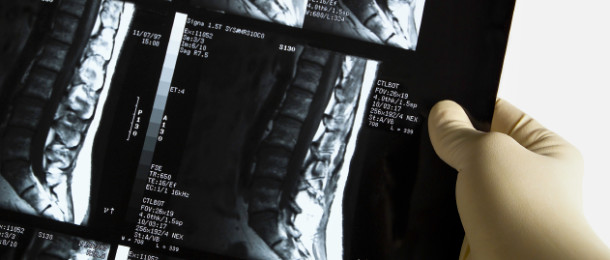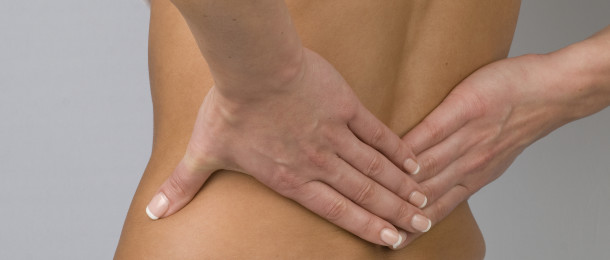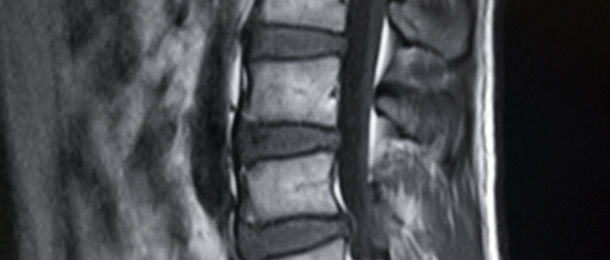Simple Tips to Help You Manage Chronic Pain

Pain indicates that something is wrong with the body. It can slowly show up over time or it can come on suddenly after an injury. Pain can range from mild to severe, and can come and go or occur on an acute basis. Acute pain comes on all at once and is usually brief, commonly in response to an injury. Acute pain disappears once the underlying cause has been treated. So, if you develop acute pain after a broken arm, it should go away once the arm is treated.
Chronic pain, on the other hand, is long-lasting and returns often. It may result from an injury that did not heal correctly or an illness. Sometimes, no cause can be found. Chronic pain can persist for years. It affects your physical and emotional well-being.
Chronic pain causes more disability than heart disease or cancer, according to experts. How can you best manage chronic pain? Here are a few tips.
Eat the Right Foods
Diet can have a significant effect on your well-being. Inflammation in the body can be reduced through diet, treating the underlying cause of many chronic pain conditions. Research has found that patients that follow a strict Mediterranean or vegan diet have reduced levels of chronic pain. If possible, adopt a diet that includes large amounts of vegetables, olives, and other healthy oils. Foods that cause inflammation include chocolate, high-fat red meat, and processed foods. It is best to stay away from these foods if you suffer from chronic pain.
Yoga
Yoga has long been used to manage pain. This centuries-old practice provides stress-relief and helps to calm the mind. Pain often occurs because of chronic muscle spasms, and practicing the postures of yoga can help you train your muscles how to relax and lengthen, decreasing muscle spasms.
Check Your Hormones
Hormones are chemicals that are produced by your endocrine glands. They work much like messengers in the body. They send signals to the rest of your body to keep it functioning. Hormones control your metabolism, as well as many other important body functions.
Hormones are essential to your body and when released in excessive amounts or at wrong timings can disrupt major body systems. New research indicates that hormones are useful in treating chronic pain. Your physician can talk to you about hormone replacement therapy, which can help regulate your emotions and reduce pain.
Talk to a Professional
Talking to a therapist about your pain may help reduce it, according to the American Psychological Association. They have found that Cognitive Behavioral Therapy is effective for chronic pain. Cognitive Behavioral Therapy teaches you how to change your thoughts regarding troubles in your life before they become destructive. It also teaches stress management and coping skills for use during times of high stress.
Additional Ways to Manage Chronic Pain
When lifestyle and diet changes are not enough, you may need to seek additional methods to treat your pain. Always check with a chronic pain specialist to decide which alternatives are best for you. They can help you identify additional ways to manage chronic pain safely.
If you are reading this on any other blog than Comprehensive Pain Management Center or via my RSS Feed, it is stolen content without credit. You can find us on Twitter via @CompPainMgmt. Come and visit our blog at http://www.compainmc.com/blog/.
Relieving Chronic Back Pain with Innovative Treatments

The pain from degenerated or slipped discs can bring your daily life to a halt. You may find it difficult or even impossible to bend, lift heavy objects, or sit comfortably. Rather than treat the pain with prescription medications or trying to adjust your life to it, treatment options like disc denervation help with relieving chronic back pain.
What is Disc Denervation?
Disc denervation involves eliminating a nerve’s ability to cause pain. Doctors who specialize in this treatment use radiofrequency to detect what nerves in your back are causing the pain. They then inject a needle to disconnect the nerve.
This procedure has reportedly helped chronic back pain sufferers find relief from months at a time. They no longer have to rely on medications to kill the pain. They are also able to resume their normal range of motion without being compromised by nerve pain.
How is Disc Denervation Performed?
This procedure is done on an outpatient basis and typically only takes an hour to complete. The doctor uses a local anesthetic to deaden the area. People do not feel the injection of the needle or any of the heat or nerve disconnection.
Once the procedure is finished, the doctor then applies a bandage on the affected area. After spending a brief time in recovery, the patient can walk out of the facility and return home to rest.
Who is a Candidate for Disc Denervation?
Many people who have given up hope of ever finding relief from chronic disc pain may be good candidates for disc denervation treatments. Women who have given birth, for example, often develop slipped or degenerated nerves after undergoing epidurals during labor. The epidural needle may have contributed to the disc weakening or slipping out of place.
Further, the weight of carrying a baby can cause discs in a woman’s back to degenerate. Rather than spend the rest of her life with chronic back pain, she may benefit by undergoing nerve denervation.
Likewise, people who have suffered injuries due to falls, lifting heavy objects, or carrying out other tasks may want to consider this treatment option for chronic back pain. They can experience longer lasting relief and also go back to work without being compromised by chronic pain and discomfort.
Finally, people who worry about becoming addicted to painkillers may benefit by going through this operation. Many doctors prescribe powerful medications that help kill the pain of chronic disc degeneration. People who take these medicines, however, may build up a resistance to them and then have to up the amounts that they take to find relief from the pain. Rather than risk becoming addicted to painkillers, sufferers of slipped or degenerated discs may prefer to go through disc denervation.
Before going through this procedure, however, people are encouraged to consult with their primary care doctors to ensure that they are healthy enough to withstand the treatment. If they have conditions like high blood pressure, diabetes, or if they are breastfeeding, they may want to wait or choose another treatment for their chronic back pain.
Chronic back pain no longer requires that people take medicines or simply live with the pain. Sufferers can now go through disc denervation that will disconnect the nerves that are causing their back pain.
If you are reading this on any other blog than Comprehensive Pain Management Center or via my RSS Feed, it is stolen content without credit. You can find us on Twitter via @CompPainMgmt. Come and visit our blog at http://www.compainmc.com/blog/.
Overcoming Scoliosis

Although the upper spinal column has a degree of roundness and the lower portion of the spine appears to sway when viewed from the side, it should be a straight vertical line when observed from the rear. Scoliosis is a lateral, or sideways, curvature of your spine. The condition most often occurs during a growth spurt just before the onset of puberty. Although the cause of many cases of scoliosis is unknown, it can be the result of medical conditions like cerebral palsy and muscular dystrophy as well as physical trauma. The medical condition also tends to run in families. Girls have a higher risk of developing the condition.
What is Scoliosis?
Most cases are mild, but the disorder can worsen over time. Severe scoliosis can be debilitating. A severe curvature of the spine can reduce the amount of space within the chest cavity. As a result, the lungs may not function properly. The curvature may also cause balance problems due to uneven hips or uneven leg lengths. As the condition progresses, the spine may rotate or twist resulting in a protruding rib or shoulder blade.
Treatment Options
A doctor should closely monitor the individual to determine whether the curvature is worsening. While mild cases do not require treatment, complex curvatures of the spine may require physical therapy, chiropractic care or a brace. Particularly severe cases may require surgery. Adults with the disorder may experience chronic back pain. Physical therapy techniques have been developed to offset the side effects of scoliosis and help you to breathe better. Therapy can also improve the shape and appearance of your body chiropractic care may be effective in treating acute short-term pain.
In severe cases, wearing a brace is the recommended course of treatment to prevent further curvature of the spine. Contoured to conform to the patient’s body, the device fits underneath the arms and around the hips, lower back and rib cage. The close-fitting brace is worn underneath the clothing and typically does not interfere with daily activities. The brace should be worn day and night because the number of hours that it is worn increases its effectiveness. Children can remove the brace to participate in sports if required. Wearing the brace is discontinued after the spinal column stops growing.
While bracing can halt the progression of the curvature, it may only provide temporary correction of the condition. The scoliosis may assume its original magnitude or worsen when the brace is removed. If the curvature exceeds 45 degrees, the Scoliosis Research Society generally recommends surgery as the prescribed course of treatment. If the curve is allowed to exceed 70 degrees, the disorder distorts the individual’s normal posture.
Spinal fusion is the most common type of surgery. During the procedure, surgeons will connect two or more vertebrae together with pieces of bone or bone-like material. Metal rods, wires and screws are used to hold the spinal column in place until the vertebrae fuse together. In children, an adjustable rod is used. The rod will be lengthened every few months based on how fast the child is growing.
If you or your child are experiencing back pain or any of the other symptoms of scoliosis, you should schedule an appointment with a medical professional. Early diagnosis and treatment increases the chance of a more positive outcome.
If you are reading this on any other blog than Comprehensive Pain Management Center or via my RSS Feed, it is stolen content without credit. You can find us on Twitter via @CompPainMgmt. Come and visit our blog at http://www.compainmc.com/blog/.
Complementary Treatments for Chronic Pain

Do you have chronic pain? If so, then you are not alone. According to the National Institute of Health, almost 50 million American adults have chronic pain. Chronic pain can be quite debilitating and sap both your energy and well-being. Luckily there are complementary treatments for chronic pain in order to limit the amount of pain felt.
What can you do to manage chronic pain? There are a number of effective treatment. When used with medications and other interventions for pain, complementary treatments are highly effective. Complementary treatments for chronic pain are therapies that are used in conjunction with conventional treatments. Complementary therapies include a wide variety of treatments, such as vitamin supplements, yoga, relaxation, exercise and many others.
In the past ten years, there has been strong research evidence for the benefits of alternative therapies. These treatments are an excellent adjunct to traditional medications and interventions. They can help you lead a happier and fuller life. Combining complementary therapies may allow you to reduce the dose of your pain medications or, in some cases, alleviate your pain. Alternative therapies also provide you with the ability to actively assist with your pain management. Here are some of the most effective complementary treatments for pain.
Cognitive Behavioral Therapy
Cognitive behavioral therapy helps individuals identify and change thoughts and behaviors that contribute to poor pain management. By changing negative thoughts and behaviors, people can alter their awareness of pain and develop more adaptive coping skills to manage pain. The brain perceives pain, so addressing thoughts and behaviors related to pain can the way you view it.
Acupuncture
Acupuncture can be used to treat more than 30 diseases, including pain, according to the World Health Organization. Acupuncture was used by Sixteenth Century Chinese doctors, who believed that disease and sickness is due to an imbalance of energy in the body. Acupuncture involves using stainless steel needles to stimulate the body’s major energy-carrying channels. This helps to correct imbalances in the body. Acupuncture is believed to alleviate pain by increasing the release of endorphins, which are chemicals that block pain. Endorphins are part of a system that blocks the message of pain from being delivered to the brain.
Chiropractic Treatment
Chiropractic treatment is a non-surgical treatment that involves hands-on manipulation to the spine. Manipulation helps to improve joint mobility. It is believed that proper alignment of the body’s musculoskeletal structure, particularly the spine, will help the body to heal quickly.
Botox
Botox is a surprisingly effective treatment for many types of pain. Botox is a purified protein that relaxes the muscles. Botox has been used since the late 1980’s for pain management and is approved by the FDA for the treatment of pain. Botox treatments typically take just a few minutes. A small needle is used to inject Botox into the muscles that are painful. The Botox will relax these muscles and the pain diminishes.
Biofeedback
Biofeedback refers to a technique that is used to help you gain more control over involuntary nervous system responses, such as blood pressure and heart rate. This therapy has been shown to be effective for chronic pain, migraines and other conditions. Biofeedback works by helping you utilize relaxation methods to become more in control of what is going on inside your body.
These complementary treatments for chronic pain can be paired with traditional treatments. By focusing on pain relief through multiple types of treatments, you are likely to overcome pain and focus on living a strong, positive lifestyle.
If you are reading this on any other blog than Comprehensive Pain Management Center or via my RSS Feed, it is stolen content without credit. You can find us on Twitter via @CompPainMgmt. Come and visit our blog at http://www.compainmc.com/blog/.
How Cognitive Behavioral Therapy Can Help with Managing Chronic Pain

You have likely heard of Cognitive Behavioral Therapy as a treatment for people who are suffering with anxiety and panic disorders, or with moderate to severe depression. While CBT was originally developed for emotional disorders, it may surprise you to learn that this approach can also be helpful for people with chronic pain from conditions like fibromyalgia or diabetic neuropathy. Here are some things you need to know about this type of treatment, how it can help with the pain, and why it works well in tandem with other methods.
Understanding the Basics
The underlying premise associated with CBT is that the range of negative emotions triggered by your health issue magnifies the pain you are experiencing. For example, the fact that you are living with fibromyalgia every day of your life leads to feelings of isolation, remorse, anger, and a host of other negative reactions. While it’s perfectly understandable that you would experience these and other emotions, they are actually making the pain worse.
Choosing to see a therapist and engage in a series of treatments using CBT is intended to help you gain more control of your emotions. As you begin to eliminate them one by one, that leaves room for more positive thinking. While your pain does not go away completely, you find that it interferes with your life less, and you find it easier to manage.
3 Domains of CBT
Thoughts
The thinking that goes on inside is the cognition domain and refers to all that happens inwardly, such as thoughts, images, memories, dreams, beliefs, attitudes, and where attention goes. All of these can contribute to negative thinking.
Feelings
This includes emotional and physical feelings and how an individual might understand and cope with them. Emotions can cause symptoms such as sleep disturbances, fatigue, and eating changes.
Behavior
This domain includes the way in which thoughts and feelings might make a situation worse, such as avoiding certain activities that would help to improve mood. It might also include the behavior that only leads to worsening mood, feelings, and thoughts, such as ruminating or berating oneself.
The way one responds to circumstances in life can have an influence on mood and feelings and thoughts. For instance, if Timothy was let go from his job after 14 years, he could either experience depressive thoughts, such as thinking that they no longer needed him or that he was letting his family down. Of course, this in turn would trigger certain feelings such as depression, discomfort, and hopelessness. And this in turn might lead to avoiding friends and family or activities he used to enjoy. And, of course, all of this could contribute to the experience of chronic pain.
However, he might see it as an opportunity to make a change in his life. He might have a positive thought about all the skills he has acquired over the years and how he can apply them elsewhere. As a result, he might feel optimistic, excited, and motivated, and he might start behaving in ways to acquire that new opportunity such as networking, planning for the future, and building a new career.
The difference in this example began in the way that Timothy inwardly responded to his circumstances. CBT would assist Timothy in finding the thoughts that might have led to depression or anxiety or stress, all of which can lead to chronic pain, and change those towards positive ones in order to change his life.
CBT in Action
In order for the treatments to have effect, it’s necessary for you to identify the emotions that are complicating your condition. As is true in many aspects of life, a problem that is given a name is easier to address than one that remains unknown or at least a little fuzzy in the mind. As part of the time you spend with the therapist, you will learn to examine each emotion as it appears.
Perhaps you suffer with a lot of discomfort in your feet and lower legs thanks to the neuropathy brought on by your type 2 diabetes. The stinging sensation coupled with areas that are numb leave you feeling discouraged and somehow less of a person. The therapist will have you zero in on those negative thoughts and consciously make the effort to replace them with positive ones. In this scenario, instead of discouragement and a sense of being inferior, you will seek to remind yourself that you still have all of your toes, you can still walk, and that your mind is just as sharp as it ever was. In other words, the pain triggered by the neuropathy is not enough to control every aspect of your life.
Using It For Pain Management
The use of cognitive behavioral therapy for pain management has three basic components:
Making the Connection
The first is helping patients understand the connection between thoughts, emotions, and their pain. This in turn can empower a patient to have more control over the pain they experience.
Coping with Pain
The second part of using CBT for pain management is providing coping techniques to use when pain becomes intense. Some of these coping mechanisms are relaxation techniques and the use of cues that immediately bring on a relaxed state. Using these tools can help to decrease muscle tension, reduce emotional stress, and divert attention away from stress. This also includes helping a patient find the thought pattern that contributes to the pain. Monitoring and documenting thoughts helps to easily identify the connections between them and the specific reactions to certain events in the day. For instance, if John wasn’t able to meet the expectations of his boss, and as a result had the thought, “I am worthless,” this might lead to feeling shameful and perhaps to worse pain in the body. Replacing thoughts with those that are more life affirming can facilitate pain relief.
Problem Solving
This component of CBT is the application of skills in daily life. For instance, learning when to use the techniques learned when pain flares up and becomes intense. Clinicians and patients might develop a plan together in order to manage chronic pain while not in treatment.
Cognitive Behavioral Therapy can be an essential ingredient in pain management. In fact, it is widely being used for a variety of physical and psychological illness, in addition to facilitating mental wellbeing, reducing anxiety, minimizing depression, and managing emotional and physical pain.
Progress and Setbacks
Like any type of treatment for physical or mental distress, CBT does not make everything all better after one or two treatments. You may experience setbacks along the way. Don’t beat yourself up if discarding negative thinking does not come easy at first. Many people require time to make the transition to a more positive frame of mind.
When you do have a day when it seems that no amount of effort has an impact, tell your therapist all about it. You will most likely be reminded of the days when you were able to reverse your thought processes and the pain was easier to manage.
Remember that CBT does not cure the underlying physical cause of the pain. That’s not its purpose. What it will do is provide you with a powerful tool that helps lessen the pain and its impact on your life. You will still make use of medication to deal with the underlying symptoms, although you are likely to find that the need to take something specifically for the pain will diminish.
If you are reading this on any other blog than Comprehensive Pain Management Center or via my RSS Feed, it is stolen content without credit. You can find us on Twitter via @CompPainMgmt. Come and visit our blog at http://www.compainmc.com/blog/.
Back Pain Relief Without Drugs or Surgery

Millions of people in America suffer from some sort of back pain issue. Most of them seek out doctors who will suggest risky surgeries or prescribe dangerous medications to immediately alleviate the pain that their patients experience. An increasing number of physicians now inform patients about an effective, alternative healing mechanism that has been around for ages. That healing mechanism is the human body itself. Here are some of the top ways to activate the body’s healing properties and get back pain relief; side effects could include a lifetime of joy and well-being.
Eat Clean, Nutrient-Rich Foods
Plant-based foods have been acknowledged as powerful medicine since ancient times. These foods are normally full of nutrients that are easily absorbed by the body and are known to give back pain relief. These nutrients are needed to help the body function and heal itself. Since many back pain problems stem from chronic inflammation, back pain sufferers should focus on eating lots of fresh, raw produce and foods that have anti-inflammatory properties. Some foods that should take center stage in their diets are broccoli, turmeric, ginger, walnuts and blueberries. Foods that are known to trigger inflammatory reactions in the body are artificial ingredients, coffee, alcohol, refined sugars, meats, dairy products, eggs and grains.
Get Adequate Sleep
Sleep is an important aspect of the body’s healing process because it is the time when the body can fully repair strained or damaged muscles. Going to bed early and sleeping on firm surfaces facilitate better sleep. Also, the healing process during sleep is enhanced when the body does not have to concentrate on digestive processes or excretory functions.
Exercise Regularly
Moving around is likely the last thing that someone wants to do who is suffering from back pain, but exercise that is performed properly and regularly promotes healing. Back pain sufferers achieve the best results by consulting with physical therapists who can customize exercise regimes that accommodate specific ailments.
Obtain Proper Alignment
Chronic back pain may have its roots in poor posture or spine alignment. Licensed chiropractors effectively diagnose back pain issues and recommend non-invasive, alignment protocols that produce dramatic results. These doctors also recommend stretching and exercise techniques that strengthen back muscles and act as a defense against future back pain.
Indulge in Therapeutic Massage
Massage therapists who specialize in sports injury massage can target the right muscles and provide back pain relief. The protocols that are followed during injury massage therapy improve blood circulation within the body which brings more nutrients and oxygen to injured areas within the back. When injury massage therapy is performed regularly, it speeds the body’s overall healing processes.
Commit to Intermittent Fasting
While some areas in the world are experiencing famine, most Americans eat too much of the wrong foods regularly. This type of lifestyle leads to obesity and many degenerative diseases. The best way to stop this detrimental cycle is to remove junk foods from the diet. After establishing healthy eating habits, one should try fasting once or twice per week. The fasting period gives the body a break from digesting foods, and its energy is refocused on healing. While many celebrities are doing intermittent fasting for weight loss and anti-aging benefits, back pain sufferers are finding some relief from the practice as well.
Engage in Daily Prayer
The body is a temple that houses the spirit that came into existence through the Creator. When a person meditates on their Creator, their spirit is filled with light, peace and joy. That is the environment where optimal healing occurs within the spirit, soul and body.
These are only a couple of options for back pain relief. Talk to your doctor to learn about other relief options.
If you are reading this on any other blog than Comprehensive Pain Management Center or via my RSS Feed, it is stolen content without credit. You can find us on Twitter via @CompPainMgmt. Come and visit our blog at http://www.compainmc.com/blog/.
Managing Chronic Pain to Improve Quality of Life

A warning sign that your body or mind is experiencing a problem, pain can appear suddenly or increase gradually over time. The sensation may be mild and intermittent or severe and persistent. According to the National Institute of Neurological Disorders and Stroke, untreated, acute pain can become a chronic issue. Persistent pain can occur because of an illness or an injury as well as distressing emotional events like grief and anxiety. The pain can linger for months or years and negatively affect your physical and emotional well-being. However, there are many things you can do to start managing chronic pain to improve your quality of live.
Tips for Managing Chronic Pain
While living with chronic pain can be difficult, it is possible to improve your quality of life and ability to function. Although advances in medicine have provided cures for some diseases and extended the lives of people suffering from a variety of illnesses, health care professionals are still struggling to understand and control chronic pain. Holistic techniques and programs focusing on the patient help individuals manage their pain. These interdisciplinary programs are designed to encourage those dealing with pain to regain control over their lives by taking an active role in their treatment.
Anti-Inflammatory Foods
Patient-centric pain management programs often incorporate diet and exercise regimes. The Journal of Alternative and Complimentary Medicine published a study confirming the ability of an easy-to-digest diet free of processed foods to alleviate inflammation, a major trigger for pain. In addition to aiding the digestive process and providing essential nutrients, a healthy diet reduces the risk of heart disease, helps keep weight under control and improves blood sugar levels. It is also important to stay well hydrated. According to the Mayo Clinic, dehydration aggravates chronic headaches and backaches. While it may be tempting to consume juice, coffee or soda, their diuretic characteristics make these beverages a poor overall choice. Water keeps you hydrated without excess caffeine, calories and sodium.
Exercise
Exercise helps with managing chronic pain by naturally increasing your endorphin levels. These brain chemicals block pain signals and improve the mood. Thirty minutes of daily exercise strengthens muscles by reducing the potential for injuries and illnesses. It helps you maintain normal weight, lowers the risk of heart disease and controls blood sugar levels. A regular exercise regimen along with relaxation techniques reduces stress, anxiety and depression, which can intensify chronic pain. Patients who are unable to engage in strenuous exercise may still benefit from meditation, yoga and massage. In addition to improving the quality of sleep and increasing your range of motion, massage therapy and yoga can reduce stress levels.
Lifestyle Choices
Lifestyle choices like smoking and excess alcohol consumption worsen chronic pain. People who smoke are more likely to experience chronic pain than people who do not smoke. An ineffective pain management strategy, alcohol interferes with the ability to cope with pain. Chronic pain sufferers should also consider joining a support group. Talking about the pain with others who suffer the same or similar problems give patients the comfort that they are not alone and helps with managing chronic pain. Other members of the group can provide encouragement and ideas on how to deal with chronic pain. The American Psychological Association recommends psychotherapy for pain sufferers. Biofeedback, cognitive behavioral therapy and guided imagery are techniques that also help you manage pain.
A comprehensive pain management program overseen by your doctor can improve your quality of life by helping you cope with the physical and mental effects of the condition.
If you are reading this on any other blog than Comprehensive Pain Management Center or via my RSS Feed, it is stolen content without credit. You can find us on Twitter via @CompPainMgmt. Come and visit our blog at http://www.compainmc.com/blog/.
Herniated Disk: What It Is and How to Treat It

Most people have back pain at some point in their lives. Back pain is one of the most frequent reasons that people are absent from work or go to the doctor. Although it is possible for back to result from many conditions, a herniated disk is one of the more common causes.
What is a Herniated Disk?
Your spine consists of 26 bones. These bones are called vertebrae. In between the vertebrae are soft disks that are filled with a jelly-like material. The disks provide cushioning to the vertebrae. They also help keep them in place. Sometimes, disks degenerate or break down. When the disks weaken, they may rupture. This is known as a herniated disk. A herniated disk allows the jelly-like matter in the middle of the disk to leak out. This can irritate the nearby nerves, causing pain. In addition, it can place pressure on the spinal cord and cause numbness or weakness in a leg or arm. Some people experience no symptoms at all.
What Causes it?
Most of the time, herniated disks are caused by either age-related wear and tear. Over time, spinal disks become less flexible and more prone to rupturing. This is also known as degeneration. In other instances, herniation can be caused by a traumatic event, such as car accident or blow to the back.
How is it Diagnosed?
Your doctor can diagnose a herniated disk with a medical history and a physical exam most of the time. They may order other tests, as well. Here are the most common tests:
Nerve tests
Nerve conduction examinations and electromyograms assess how well electrical impulses move through the nerves. This can help identify if nerves are damaged.
Imaging tests
One of the following tests may be ordered if your physician suspects that another condition might be causing your symptoms or if he or she needs to see which nerves are affected.
- X-rays-Although normal X-rays cannot be used to determine if a disk is herniated, they can be used to determine if your back pain might be due to another cause.
- Computerized Tomography Scan-A CT scan refers to a series of X-rays taken from many different viewpoints. The images are then combined to create a cross-sectional view of the spinal column, as well as the structures surrounding it.
- Magnetic resonance imaging-Also known as an MRI. This test uses a magnetic field and radio waves to generate images of your tissues and organs. An MRI is often used to pinpoint where the herniated disk has occurred and to determine what nerves are involved.
What Treatments are Available?
The primary goal of treatment is to help the patient return to their normal level of activity and relieve pain and other symptoms that result from a herniated disk. Every patient’s treatment plan should be individualized depending on the source and severity of the pain and whether or not they are exhibiting any other symptoms. In most cases, patients start with a course of conservative care prior to considering surgical options. In rare cases, immediate surgical intervention may be needed to prevent more serious symptoms. Conservative treatments for a herniated disk may include:
- Exercise programs or physical therapy
- Massage therapy
- Acupuncture
- Cognitive behavioral therapy
- Bio Feedback
Other treatments for herniated disk include:
- Pain medications
- Epidural injections
- Spinal Surgery
Although disk herniation can be quite disabling, with proper treatment and care, most people completely recover. If you or your primary care physician suspects that you have a herniated disk, seek the advice of a pain management specialist. They can provide you with a range of treatment options to help you return to your previous level of activity.
If you are reading this on any other blog than Comprehensive Pain Management Center or via my RSS Feed, it is stolen content without credit. You can find us on Twitter via @CompPainMgmt. Come and visit our blog at http://www.compainmc.com/blog/.
What are Superior Hypogastric Plexus Injections?
Most doctors believe that chronic pain in the visceral and pelvic regions is often caused by vulvitis, pelvic fibrosis, prostatitis, irritable bowel syndrome, radiation-induced neuropathy, and myofascial pain syndrome. The superior hypogastric plexus is a component of the sympathetic nervous system that is responsible for communicating the pain from the pelvic regions to the central nervous system. By blocking the superior hypogastric plexus with the necessary injections, one can experience substantial pain relief in the visceral and pelvic areas.
What is a Superior Hypogastric Plexus Block?
Commonly referred to as a hypogastric block, a superior hypogastric plexus block is an innovative and minimally invasive procedure that is used to relieve pelvic and genital pain. The uniqueness of this advanced procedure lies in its efficiency in treating pain from a multiple different origins such as the structures of the pelvic region that are innervated by the inferior hypogastric plexus, genitofemoral nerve, superior hypogastric plexus pudendal, celiac plexus, and the inguinal.
How Does the Procedure Work?
Performing the superior hypogastric plexus block is typically a two-step process, especially with patients who are portraying nonmalignant pain symptoms. In most cases, the physician will perform the diagnostic block first, which consist of injecting a local anesthetic such as lidocaine or bupivacaine to access the pain’s response to a block of the superior hypogastric plexus. If the patient is demonstrating a response to the diagnostic block, the physician will then perform the therapeutic block by administering a neurolytic agent like dehydrated alcohol or phenol. Superior hypogastric plexus injections should always be performed under the careful guidance of a well-qualified pain management specialist.
Who is a Good Candidate for the Superior Hypogastric Plexus Block?
Most physicians recommend superior hypogastric plexus injections for those who are continually suffering from severe chronic pelvic pain despite their efforts to relieve the pain through oral medications, physical therapy, and other traditional therapies. Because the procedure is considered to be more effective than a sympathetic block, most patients will experience great relief from the injections for several months. This treatment may also help those who have been diagnosed with pudendal neuralgia.
If you are reading this on any other blog than Comprehensive Pain Management Center or via my RSS Feed, it is stolen content without credit. You can find us on Twitter via @CompPainMgmt. Come and visit our blog at http://www.compainmc.com/blog/.
What is a Ganglion Impar Injection?
For those who suffer from severe perineal pain, a ganglion impar injection may be the perfect procedure to alleviate their discomfort.
What is a Ganglion Impar Injection?
The purpose of a ganglion impar injection is to manage chronic pain in the genital, pelvic, visceral, perineal, and anal areas. Many of the candidates of this procedure frequently complain of a burning sensation with urination and/or defecation. The ganglion impar injection will stop the discomfort that is linked to the bundle of nerves that are receiving the pain.
How does the Procedure Work?
The ganglion impar injection is performed with the patient laying face down. The doctor will most likely place a pillow under the patient’s pelvis to ensure that the lower back resembles a flat surface. Next, the area of injection is numbed with local anesthetic. The doctor then uses fluoroscopy to guide the needle into the ganglion impar, which is a bundle of nerves that receives the pain associated with the distal urethra, vulva, perineum, and distal rectum.
There are two different types of blocks that may be used to treat the pain in the ganglion impar area.
Diagnostic Block: These blocks are primarily used for non-cancer related pain. The procedure consist of a steroid injection to ensure that the ganglion impar is really causing the patient severe discomfort. A diagnostic block is typically performed twice.
Therapeutic Blocks: These blocks use a neurolytic agent to treat the pain at the source. Therapeutic blocks are usually performed only once.
A ganglion impar injection is typically 15 minutes, and most people inform their doctors that the pain relief has lasted many weeks and even years.
What are the Potential Benefits?
As a minimally invasive procedure, the ganglion impar injection can be performed in the doctor’s office. Because there are numerous pelvic structures that have nerve fibers that travel through the ganglion of impar, a block performed in this area can treat many areas of pain simultaneously. After the procedure, most patients can expect between 50 to 100 percent pain relief from the injection.
If you are reading this on any other blog than Comprehensive Pain Management Center or via my RSS Feed, it is stolen content without credit. You can find us on Twitter via @CompPainMgmt. Come and visit our blog at http://www.compainmc.com/blog/.


